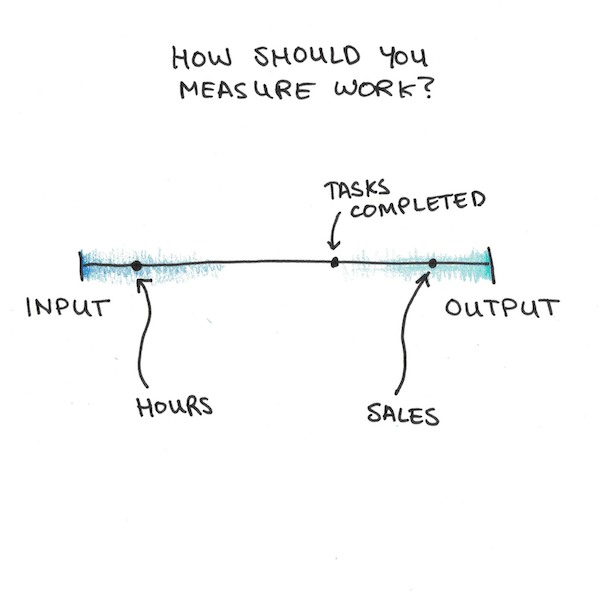The Right Way to Measure Productivity (and Why It’s Harder Than it Seems)
Curated from: scotthyoung.com
Ideas, facts & insights covering these topics:
5 ideas
·4.22K reads
4
Explore the World's Best Ideas
Join today and uncover 100+ curated journeys from 50+ topics. Unlock access to our mobile app with extensive features.
Measuring Productivity: Input vs. Output
There are two extremes of evaluating productivity: Input vs. Output
- Input: The salaryman works long hours and is mostly judged on input. The person is judged by his loyalty and commitment to the company.
- Output: The person is entirely measured on output. His work doesn't track his hours. Repeatedly failing to meet deadlines would get him fired.
273
1.44K reads
Only Judging Outputs
Some consultants are paid when the company profits go up, but no money is owed when there is no profit.
But, early management theorists noticed just having a consultant made people work harder. A consultant can make a fortune, even though the advice is worthless. The problem with the pay-for-results consultant is that the payment comes too soon. An extended period could give better insight.
224
874 reads
Big-Picture and Fine-Grained Detailed
A dimension in measuring productivity is looking at the big picture or fine-grained details.
- The big picture: Looking back over the years, how much difference did it make?
- Fine-grained means adding up the hours worked, which gives an immediate measure of progress.
But there is a trade-off. The big picture is slow to measure and may only be visible in the long run.
240
693 reads
How to Measure Productivity
What matters most is often the hardest to track. We then measure things we don't care about with the hope that it will give some clarity. The solution:
- Pick a few metrics that will estimate what matters. The metrics should be easy to measure and timely enough to give good feedback. Rewarding only hours may mean paying for a lot of overtime and not much useful work.
- Use meta-feedback to tune your short-term metrics. Your big-picture output is harder and slower to measure, but it serves a role in regularly adjusting which of the short-term metrics will estimate progress. For example, if you track the number of essays written for your productivity, it may be good initially, but the quality may suffer in time. Following the articles' results can indicate if "hours per essay" should also become a metric.
252
579 reads
Dynamic Measurements
Instead of relying on a fixed standard, regularly tweak and adapt what you measure.
Changing what you're measuring may seem like a drawback, but it really makes your work more robust. Meta-feedback on what you measure stops you from reaching a fragile solution.
239
631 reads
IDEAS CURATED BY
Angel 's ideas are part of this journey:
Learn more about timemanagement with this collection
How to overcome unwanted thoughts
How to manage intrusive thoughts
How to change your attitude towards intrusive thoughts
Related collections
Similar ideas
Read & Learn
20x Faster
without
deepstash
with
deepstash
with
deepstash
Personalized microlearning
—
100+ Learning Journeys
—
Access to 200,000+ ideas
—
Access to the mobile app
—
Unlimited idea saving
—
—
Unlimited history
—
—
Unlimited listening to ideas
—
—
Downloading & offline access
—
—
Supercharge your mind with one idea per day
Enter your email and spend 1 minute every day to learn something new.
I agree to receive email updates


